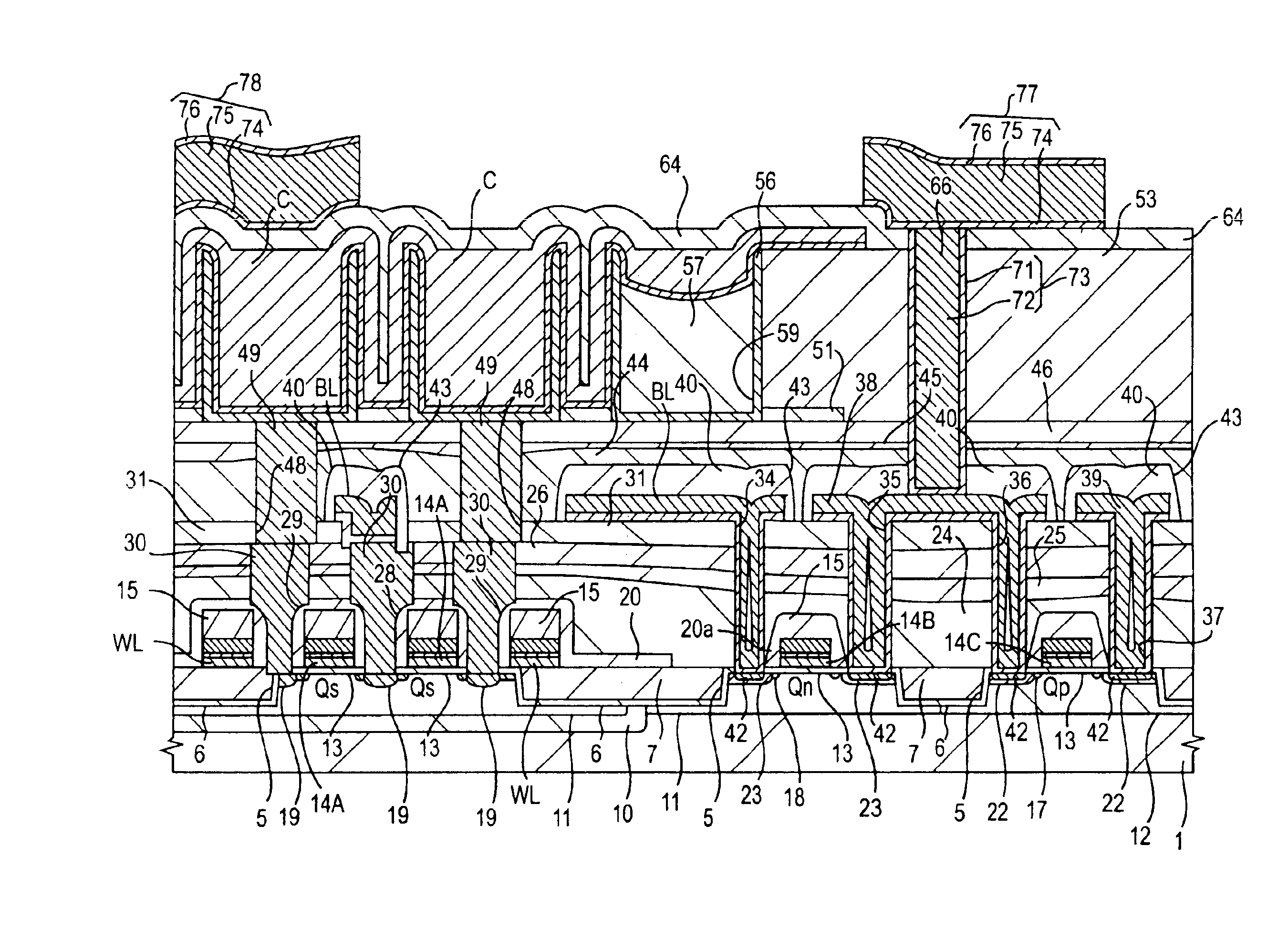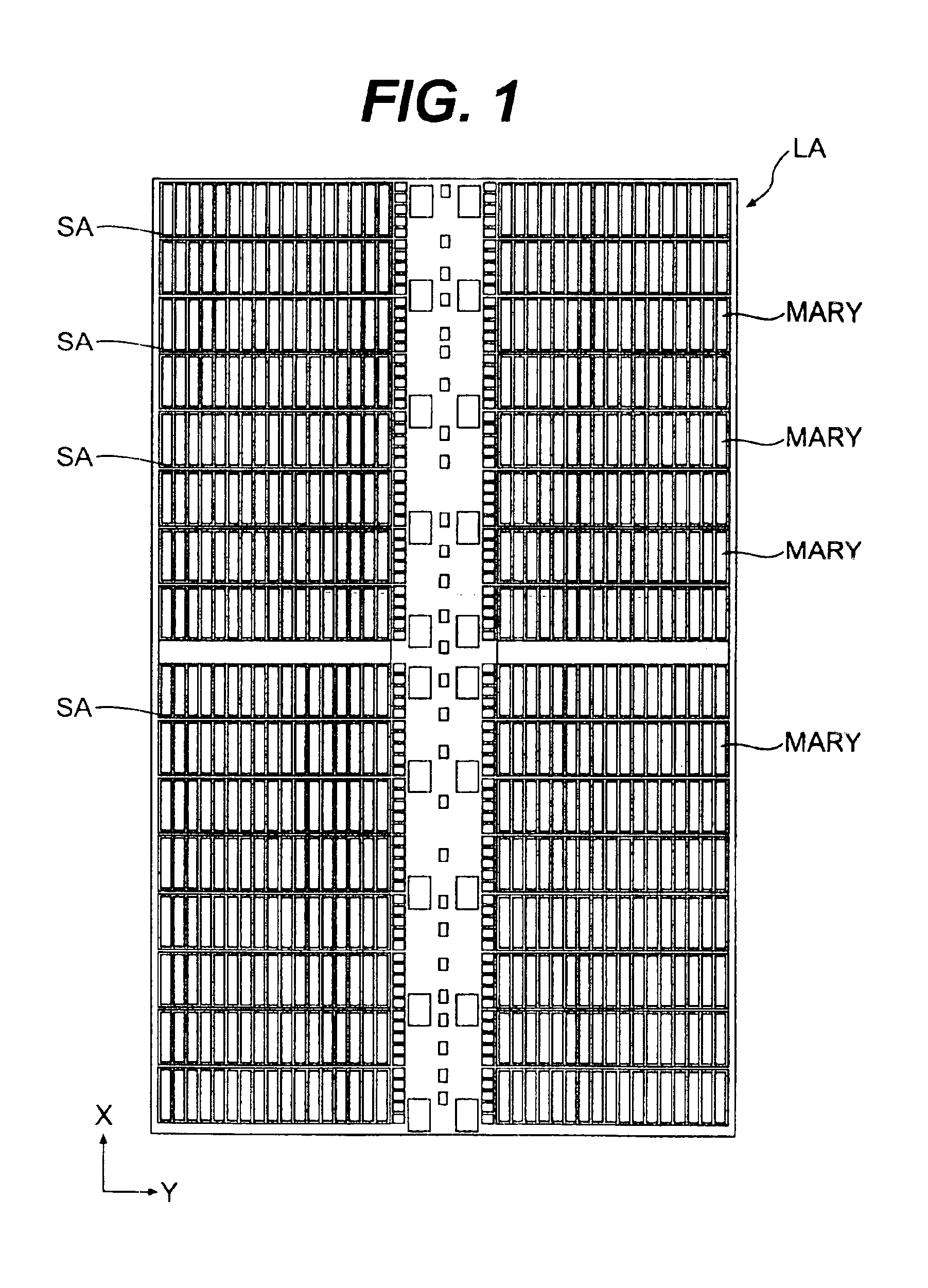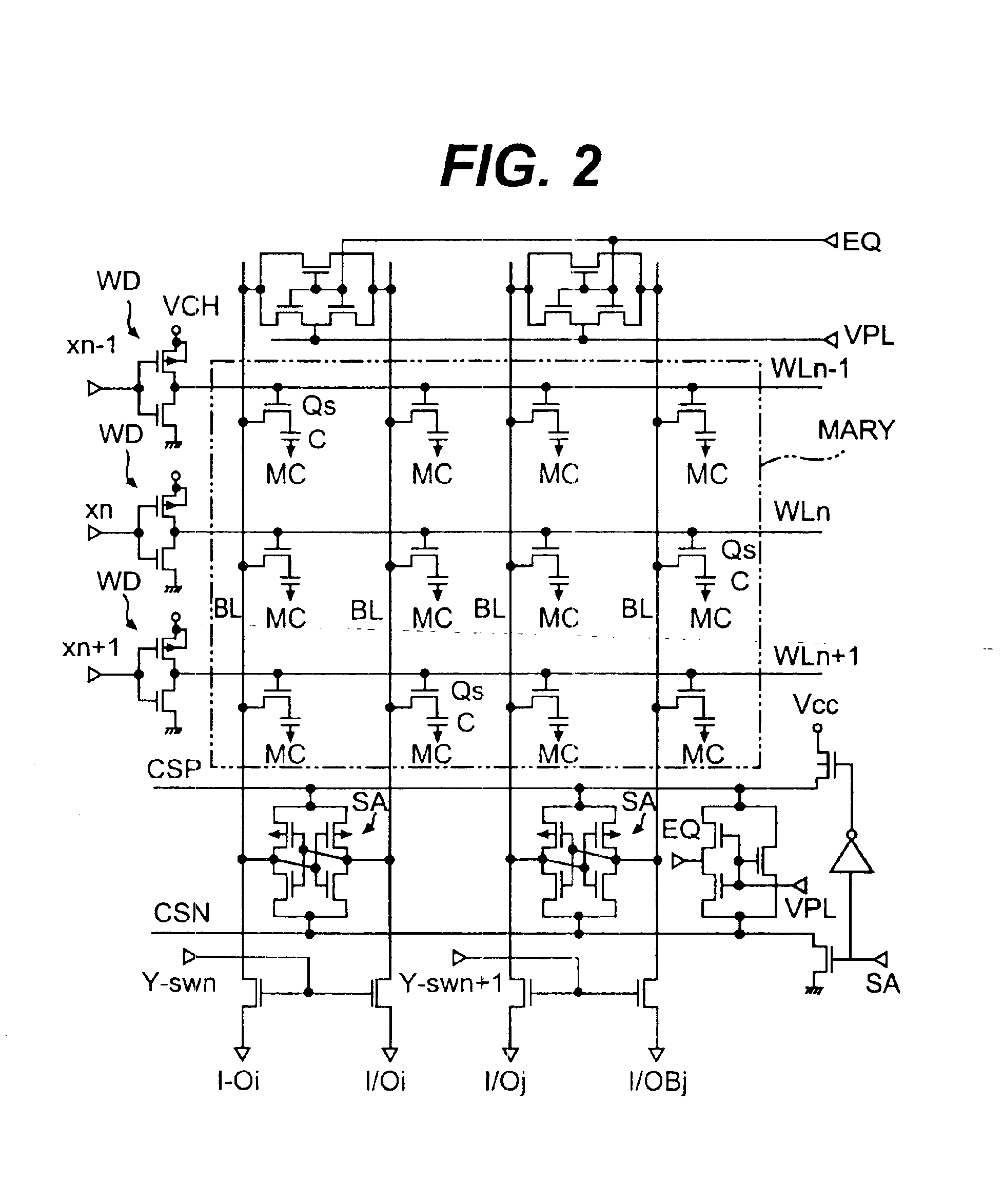Method for fabricating semiconductor integrated circuit
a technology of integrated circuit and semiconductor, which is applied in the direction of semiconductor devices, semiconductor/solid-state device details, electrical equipment, etc., can solve the problems of difficult deposit of conductive film for wiring in through-hole, cvd-tin film embedded in through-hole, and difficult to corrode al (aluminum) wiring, etc., to achieve the effect of reducing film making temperature, reducing copper corrosion, and reducing the difficulty of corroding particularly easily
- Summary
- Abstract
- Description
- Claims
- Application Information
AI Technical Summary
Benefits of technology
Problems solved by technology
Method used
Image
Examples
embodiment 1
The preferred embodiments of the present invention are described below in detail by referring to the accompanying drawings. Similar elements are provided with the same symbol and their repetitive description is omitted.
FIG. 1 is a top view of a semiconductor chip on which the DRAM of this embodiment is formed. As shown in FIG. 1, a lot of memory arrays MARY are arranged on the principal plane of a semiconductor chip 1A made of single-crystal silicon like a matrix along the X direction (major-side direction of the semiconductor chip 1A) and the Y direction (minor-side direction of the semiconductor chip 1A). A sense amplifier SA is set between the memory arrays MARY adjacent to each other along X direction. Control circuits such as a word driver WD and a data-line selection circuit and an input / output circuit and a bonding pad are arranged at the central portion of the principal plane of the semiconductor chip 1A.
FIG. 2 is an equivalent circuit diagram of the DRAM. As shown in FIG. 2...
embodiment 2
This embodiment is an example where the device uses a titanium nitride film containing a halogen element as one of electrodes of a storing capacitor section.
FIG. 47 shows a cross section of the capacitor. One electrode 101 of the capacitor and a capacitor insulating film 102 of tantalum oxide are formed in the same manner as the embodiment 1. Although the capacitor insulating film of this embodiment uses a tantalum oxide film, it may use a ferrodielectric film such as of BST and PZT. Then, using a gas mixture of titanium tetrachloride and ammonia as a source gas, a titanium nitride film 103 is formed to a thickness of 50-100 nm by the chemical vapor deposition method. This titanium nitride film is formed at about 500° C. and contains about 4% of chlorine. The upper electrode has an advantage that when it is formed of titanium nitride instead of conventionally used polysilicon, it can be formed at a lower temperature. After this, a titanium film 104 is formed to a thickness of about ...
embodiment 3
This embodiment is an example in which a titanium nitride film 105 is formed by the sputtering method over the sputtered titanium film 104 of the Embodiment 2, and will be described referring to FIG. 48. The process up to the formation of the capacitor insulating film of tantalum oxide is similar to those of Embodiment 1 and 2. After this, a titanium film 104 was sputtered to a thickness of 40 nm and a titanium nitride film 105 formed to 60 nm by chemical conversion sputter using the flow of nitrogen gas. The use of a multilayer film of the titanium film 104 formed by sputtering and the titanium nitride film 105 formed by sputtering as the chlorine trapping layer enabled almost complete trapping of chlorine and enhanced the effect to prevent corrosion of the wiring layer around the capacitor.
While, in this embodiment, the titanium film of 104 to 40 nm thickness is formed by sputtering and the titanium nitride film of 105 to 60 nm thickness is formed, the thickness of the titanium fi...
PUM
 Login to View More
Login to View More Abstract
Description
Claims
Application Information
 Login to View More
Login to View More - R&D
- Intellectual Property
- Life Sciences
- Materials
- Tech Scout
- Unparalleled Data Quality
- Higher Quality Content
- 60% Fewer Hallucinations
Browse by: Latest US Patents, China's latest patents, Technical Efficacy Thesaurus, Application Domain, Technology Topic, Popular Technical Reports.
© 2025 PatSnap. All rights reserved.Legal|Privacy policy|Modern Slavery Act Transparency Statement|Sitemap|About US| Contact US: help@patsnap.com



